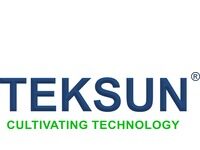Only around 53% of AI projects successfully make it from a basic prototype to full production, according to Gartner research. When trying to bring into effective action newly developed AI systems and machine learning models, businesses and organizations often struggle with system maintainability, scalability, profitability and governance, and AI initiatives often fail to generate the expected returns.
Businesses and organizations are coming together in order to understand that a robust AI engineering strategy will improve “the performance, scalability, profitability, interpretability and thereby reliability of AI models” and deliver “the good value of AI investments,” according to Gartner’s list of Top Strategic Technology Trends for 2021.
Developing a disciplined AI engineering process is key. AI engineering basically incorporates elements of DataOps and DevOps and makes AI a part of the mainstream DevOps process in all, rather than a set of specialized and isolated projects, according to Gartner.
Bringing Discipline To Development Of AI Through AI Engineering-Machine Learning Revolves Around Data
Due to advancements in AI technology, continuous access to open sources have opened the doors for companies to experiment with ML and its capabilities.
Some challenges pertaining to data are:
- Data on demand. When engineers do not have enough data to run an ML model, an often approach is taken using physics-based simulations.
- Data in hand. This refers to the use of historical data. Often data requires to collect over a long period of time, and stored in different places and formats created by different software versions.
- Data in flight. IoT sensors are typically responsible for collecting & producing large amounts of fast data from operations such as live telemetry data.
Leveraging Engineering Data for AI-powered Design Innovation
Computer-aided engineering augmented by AI is offering manufacturers the ability to discover machine learning-guided insights. Here are a few examples of AI-powered design tools:
- Design Generation: Product designers require exploring a broader population of customer pleasing, high performing, and manufacturable new product design alternatives.
- Exploration of Design: Automating repetitive tasks using ML, Design Explorer intuitively performs direct modeling for geometry creation and editing. It also performs mid-surface extraction, surface and mid-meshing, mesh quality correction, combined with efficient assembly management and process guidance.
- Optimization of Design: From design fine-tuning through to design synthesis, including complex multiphysics projects or the study of sets of data.
Exploiting Private and Hybrid Cloud Solutions
HPC tools require orchestrate, visualize, optimize, and analyze demanding workloads. Especially the computationally intensive jobs are in need that require some ML-augmented simulation and optimization runs.





